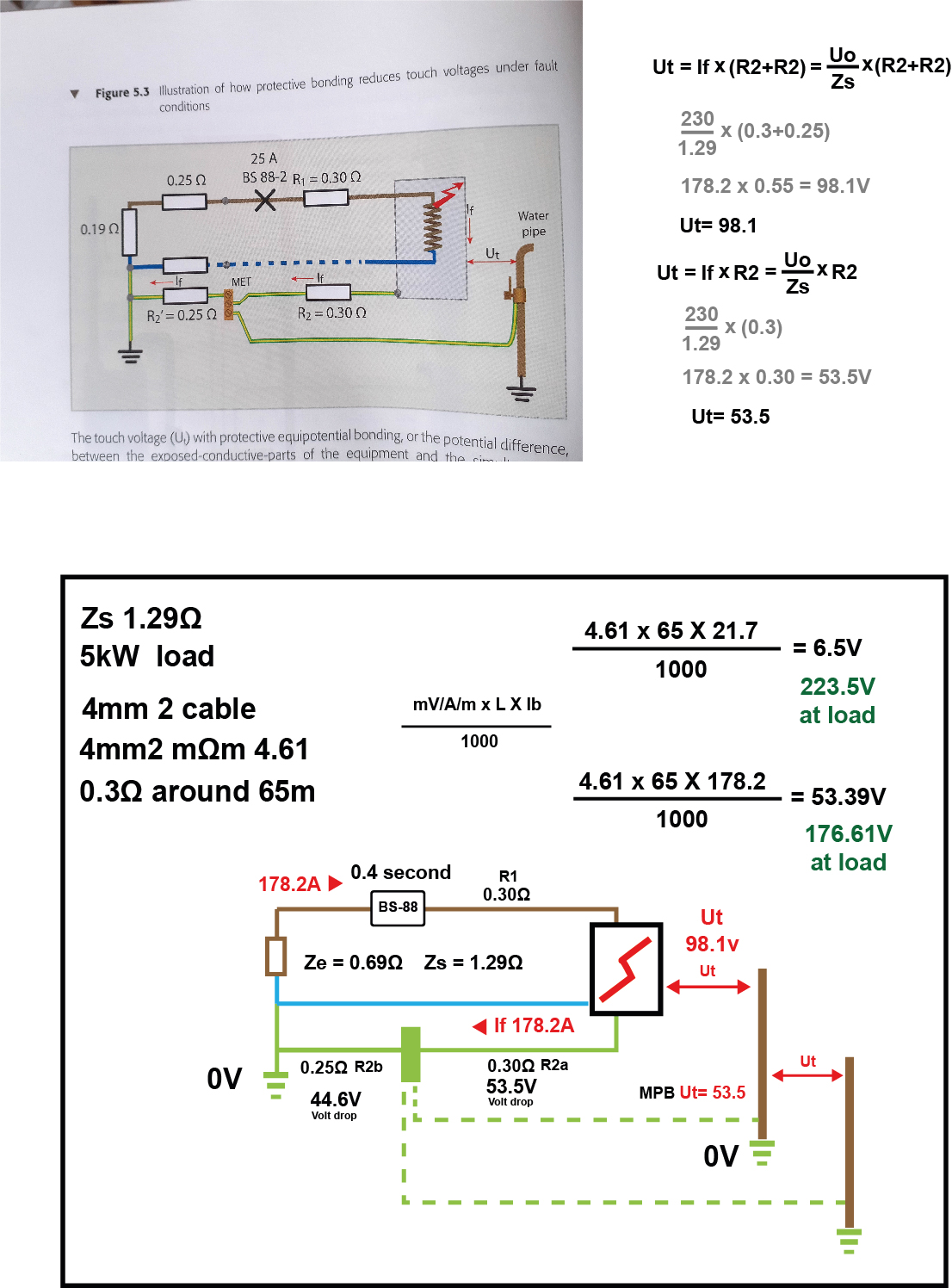Guidance note 8 - Section 5 Protective equipotential bonding
Im getting a bit lost here.....
I have attached an image from the book, and my own version of the same image.... This section is about touch voltage and how that changes, if you add Protective equipotential bonding.
The basic premise is that, without bonding the touch voltage would be 98.1V, and with bonding it would be 53.5 V
So without bonding you are calculating the R2 of the CPC and the R2 of the means of earthing.
In this case 0.30Ω and 0.25Ω
With Bonding you are only calculating the CPC 0.30Ω
It seems to suggest that the impedance of the earthing conductor is no longer counted, as we have a additional 0V connection via the water pipe??
Im getting a bit lost here. A potential difference is between 2 point, so what voltage is the Exposed conductive part, and what voltage is the Extraneous conductive part.
Also It is seems to be saying the voltage dropped is the voltage that is appearing on the exposed and extraneous conductive parts as touch voltage.
But I understand voltage drop to be voltage 'lost' by the impedance of the circuit. So if you had a volt drop of 98.1 V you would have a voltage of 131.9V.
Any help in understanding this would be appreciated. Thanks
(I have guesstimated the cable size going of the R1+R2 readings)
Im getting a bit lost here.....
I have attached an image from the book, and my own version of the same image.... This section is about touch voltage and how that changes, if you add Protective equipotential bonding.
The basic premise is that, without bonding the touch voltage would be 98.1V, and with bonding it would be 53.5 V
So without bonding you are calculating the R2 of the CPC and the R2 of the means of earthing.
In this case 0.30Ω and 0.25Ω
With Bonding you are only calculating the CPC 0.30Ω
It seems to suggest that the impedance of the earthing conductor is no longer counted, as we have a additional 0V connection via the water pipe??
Im getting a bit lost here. A potential difference is between 2 point, so what voltage is the Exposed conductive part, and what voltage is the Extraneous conductive part.
Also It is seems to be saying the voltage dropped is the voltage that is appearing on the exposed and extraneous conductive parts as touch voltage.
But I understand voltage drop to be voltage 'lost' by the impedance of the circuit. So if you had a volt drop of 98.1 V you would have a voltage of 131.9V.
Any help in understanding this would be appreciated. Thanks
(I have guesstimated the cable size going of the R1+R2 readings)
Last edited:


